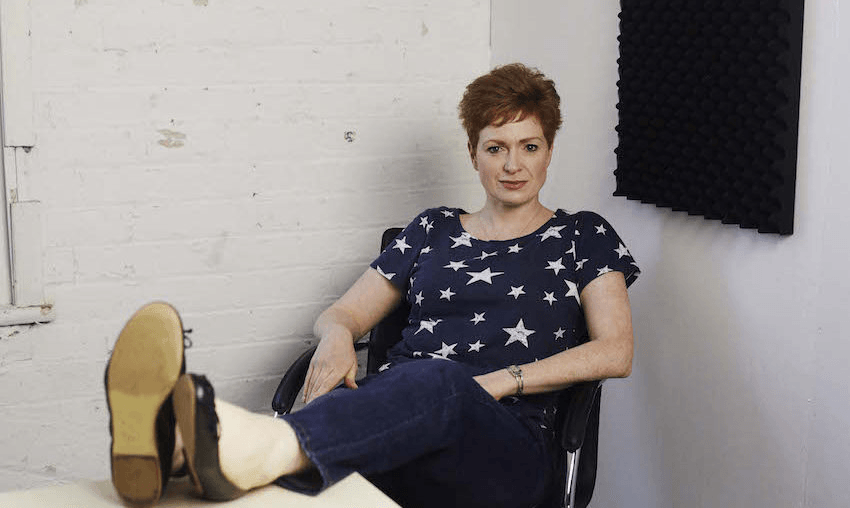The pain of endometriosis can be utterly debilitating. Susie Ferguson asks why so many women and girls are expected simply to put up with it.
It started when I was 14 years old. The first mention of dysmenorrhea in the ream of paper that is my medical records – that was the first time I went to a doctor because I had painful periods.
And from that seed grew the branches of blood loss, anaemia and the quietly sinister, ratcheting up pain. I did everything recommended to stem the tide. Nothing worked. With first exams bearing down on me, I was on the contraceptive pill aged 15.
I remember the blood. Periods that could last almost a fortnight. Using tampons and back up sanitary towels simultaneously, and still having to change every 45 minutes. Intense pain, searing and cramping, white hot. And when it stopped, a blissful exhaustion that felt like nothing but defeat.
It’s just period pain, many of the doctors told me, with a shrug. I was normal, they said. The unspoken words were to get over it and harden up, yet another patient where it’s all in her head.
Actually, it was all in my abdomen.
Endometriosis is where the uterus lining – the endometrium – ends up outside the uterus, like on fallopian tubes, the bowel and bladder. One in 10 women and girls have endo. You’ll know several who have it. Endo can be treated and well managed, but there is no cure.
The Pill brought some respite but it didn’t stop me bleeding, even when I was taking packs back to back while reporting from the frontline of the Iraq war in 2003. It got pretty messy. And in the safety of the radio studio I remember newsreading one morning with my right foot up on the control desk to push hard against the pain in my pelvis. It was the only way I could get through my shift, even though I could hardly breathe.
In my early 20s I was told my horror-show periods were likely a sign of endometriosis. But then, as now, it hides in plain sight. Endo can’t be detected by tests or seen on ultrasounds. The only way for a formal diagnosis – and therefore treatment – is laparoscopic surgery where a doctor gets eyes on it.
I was on a surgical waiting list for four years in the UK, all the while popping prescription opioids daily. Every few months another contraceptive pill or painkiller would be tried on me to see if it was the miracle drug – it never was. One time a doctor suggested having children, as that would likely sort it out. I said I didn’t feel bringing another life into the world should be touted as a cure for a disease. The doctor’s response – an eyeroll – said it all. Clearly if I was so uppity and unwilling, the pain couldn’t be that bad. I was finally diagnosed when I was 28: 14 years after that first doctor’s appointment.
I was lucky in being able to have two children, as for many endo brings infertility too. Endometriosis may also be responsible for my two miscarriages along the way. No one told me about that risk. And – newsflash – pregnancy wasn’t the cure after all.
What childbirth did give me though was the language to name that same extreme pain I’d been experiencing since I was a child. Going through natural labour taught me that my endo pain sat at about the same point as being six centimetres dilated in childbirth. I didn’t have the words to tell doctors that when I was a teenager or young adult, and they didn’t step up and take me seriously. But when I had the yardstick to accurately describe it, I was treated swiftly in New Zealand.
Eighteen months ago I had a hysterectomy and have been pain free since. Despite getting up at 4am daily for work, I have more energy now than I had for years. It turns out that life is easier when you’re not in severe, chronic pain. Who would have thought it.
When I was thinking about this the other day, I found myself looking at the wheelchair ramp at my kids’ school. Back in the 70s and early 80s those ramps didn’t really exist. There wasn’t access for people in wheelchairs to many aspects of life. That meant exclusion from most schools and unis, workplaces, and places to let your hair down. Now it’s unthinkable there wouldn’t be a way in. We remade the world so it started to work for people previously given a raw deal. Eyes opened and attitudes shifted.
For people living with endometriosis, surgery works. It’s invasive and expensive. But consider the alternative – that girls and women put up with it, take eye watering amounts of painkillers and leave many with no choice but to let their education, career or life prospects wither and die? Endometriosis NZ estimates 120,000 people suffer with it in New Zealand alone, worldwide the figure is 200 million. We’re not talking only the odd case here and there.
How about we now commit to remaking the world for the thousands of people in this country who are held hostage by their bodies, that we believe women and girls when they speak their truth, and we fund the resources to change their lives?
It would be a start.
Susie Ferguson is co-host of RNZ’s Morning Report and an ambassador for Endometriosis NZ
